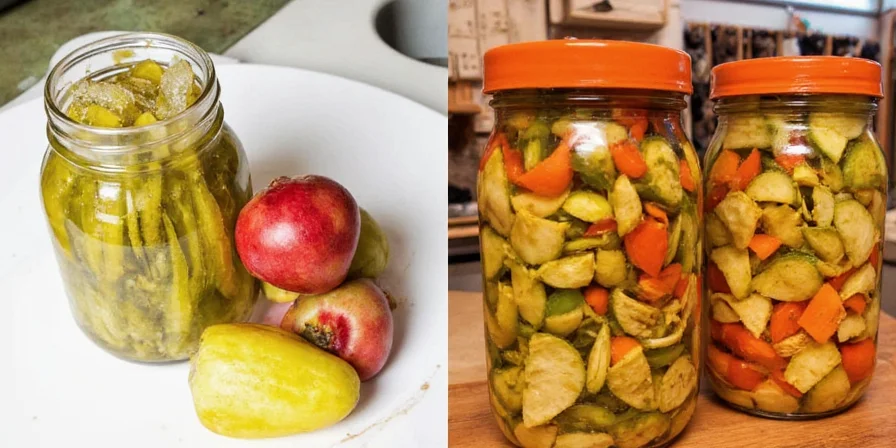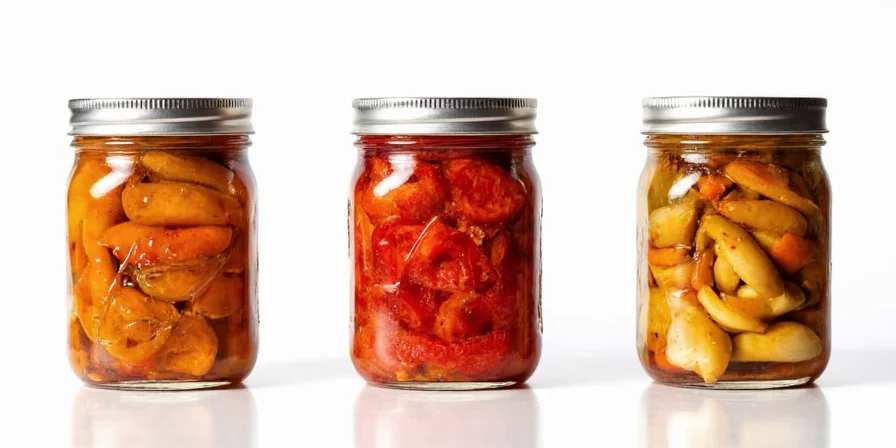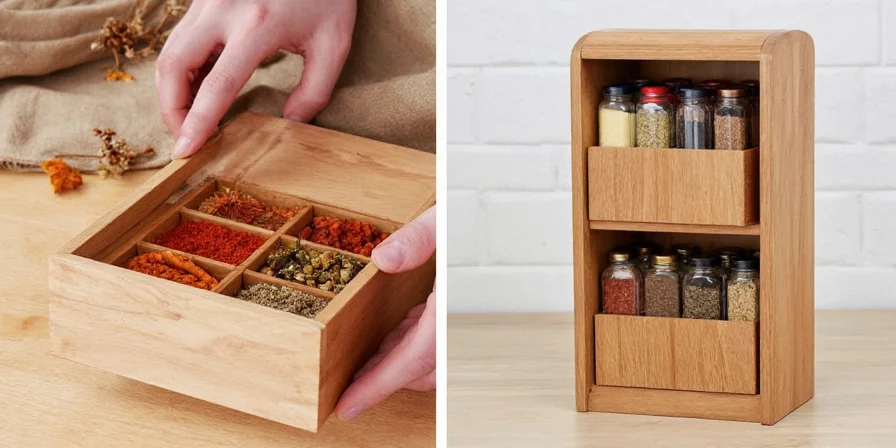Pickling and fermenting both preserve food, but they work differently. Pickling uses vinegar's acidity for quick preservation (hours to days), while fermenting relies on beneficial bacteria creating lactic acid (days to weeks). This guide explains their key differences, health benefits, and how spices impact both methods' safety and flavor - with science-backed insights most guides miss.
What's the Difference Between Pickling and Fermenting? The Quick Answer
When you search "pickling vs fermenting," you likely want a clear, immediate comparison. Here's the essence:
- Pickling: Uses vinegar (acetic acid) for immediate preservation. Ready in hours/days. Crisp texture. Low probiotics.
- Fermenting: Uses salt and natural bacteria to create lactic acid. Takes days/weeks. Softer texture. High probiotics.

Pickling vs Fermenting: Your Complete Comparison Guide
Understanding these methods helps you choose the right technique for your needs. Let's explore their differences in detail, including how spices affect both processes in ways most guides overlook.
| Feature | Pickling | Fermenting |
|---|---|---|
| Main Preservative | Vinegar (acetic acid) | Lactic acid from bacterial fermentation |
| Time Required | Hours to days | Days to weeks |
| Shelf Life | Months to years (properly canned) | Several months refrigerated |
| Probiotic Content | Low (vinegar kills bacteria) | High (contains live cultures) |
| Texture | Firmer, crispier | Slightly softer |
| Best For | Quick preservation, consistent flavor | Gut health, complex flavors |
What Exactly is Pickling? A Vinegar-Powered Preservation Method
Pickling immerses food in an acidic solution (usually vinegar-based) that prevents harmful bacteria growth. The vinegar's low pH (typically below 4.6) creates an environment where pathogens cannot survive. What most guides don't explain is how specific spices interact with vinegar to enhance preservation.
The Pickling Process:
- Cut vegetables (cucumbers, onions, carrots)
- Create brine with vinegar, water, salt, and spices
- Pour hot brine over vegetables in sterilized jars
- Process in water bath canner or refrigerate for quick pickles

Why Spices Matter in Pickling
Spices aren't just for flavor—they enhance preservation. Mustard seeds contain compounds that specifically target Listeria, making them essential for refrigerator pickles where processing time is minimal. This explains why traditional dill pickle recipes always include mustard seeds—it's food safety science, not just tradition.
| Spice | Flavor Profile | Preservation Benefit |
|---|---|---|
| Mustard Seeds | Earthy & Slightly Pungent | Targets Listeria monocytogenes |
| Dill Seeds | Grassy & Anise-Like | Natural preservative properties |
| Coriander Seeds | Citrusy & Warm | Antioxidant properties |
| Black Peppercorns | Pungent & Peppery | Bacterial growth inhibitor |
Fermenting: Harnessing Beneficial Bacteria
Fermenting preserves food through lactic acid bacteria that convert sugars to lactic acid. Unlike pickling, fermentation creates an environment where beneficial bacteria thrive while pathogens are suppressed. Crucially, specific spices interact with these bacteria in ways that affect both safety and flavor development.
The Fermentation Process:
- Chop vegetables (cabbage for sauerkraut, cucumbers for traditional pickles)
- Rub with salt and spices to draw out juices
- Pack tightly into jars, ensuring vegetables stay submerged
- Allow fermentation for days/weeks at room temperature
- Refrigerate once desired sourness is achieved

How Spices Impact Fermentation Science
Recent research shows that spices don't just add flavor—they directly influence which bacteria thrive. Garlic's allicin selectively inhibits pathogens while promoting Lactobacillus growth. Even more fascinating: the optimal garlic-to-vegetable ratio differs by climate zone due to variations in native microbial populations. This explains why German sauerkraut uses less garlic than Korean kimchi—it's microbiological adaptation, not just taste preference.

Health Benefits Compared
Understanding these differences helps you choose based on your health goals:
- Pickling Advantages: Better vitamin C retention, stable environments for spice compounds like curcumin that degrade in fermentation, ideal for long-term unrefrigerated storage
- Fermenting Advantages: Creates unique metabolites like bacteriocins from spice-microbe interactions, increases bioavailability of spice compounds, generates novel flavor compounds not found in either ingredient alone

Spice Tips for Success
Apply these research-backed techniques to improve your results:
For Pickling:
- Toasted spices release more flavor compounds
- Use whole spices rather than ground for better flavor distribution
- Add cinnamon sticks to sweet pickles for complex flavor depth
- Verify vinegar acidity - use only 5%+ acidity for safe preservation

For Fermenting:
- Lightly crush spices to release essential oils without bitterness
- Layer spices throughout for even distribution
- Add grape or oak leaves to maintain vegetable crunch
- Combine turmeric with black pepper to boost curcumin absorption
Troubleshooting Common Issues
Solve these frequent problems with spice-focused solutions:
Pickling Problems
- Cloudy Brine: Usually harmless mineral deposits, but if foul-smelling, indicates contamination
- Mold on Surface: Ensure vinegar completely covers food; add extra mustard seeds for added protection
- Soft Pickles: Add grape leaves or calcium chloride; use fresh, firm produce
Fermentation Failures
- White Film (Kahm Yeast): Harmless but unsightly—skim off and ensure vegetables stay submerged
- Rotten Smell: If not tangy/sour, discard batch; check salt ratio and temperature
- No Bubbles: Activity may have slowed; taste to verify fermentation progress

Advanced Spice Insights You Won't Find Elsewhere
For those who've mastered basics, these specialized insights optimize both flavor and safety:
- In vinegar pickling, heat-stable compounds like eugenol (in cloves) maintain potency
- Fermentation transforms garlic compounds into more effective antimicrobials like diallyl trisulfide
- Regional spice varieties have co-evolved with local microbial environments
- Mustard seeds' allyl isothiocyanate specifically targets Listeria in low-acid environments
Essential Safety Verification
For fermented products, safety isn't optional. Safe ferments should:
- Have consistent tangy aroma (never rotten)
- Maintain submersion below brine
- Show no concerning mold (Kahm yeast is harmless)
- Reach pH 4.6 or lower within 72 hours
Use pH strips to verify—this scientific approach beats relying solely on visual cues.

Critical Preservation Tip:
Label jars with dates AND spice combinations used. This helps recreate successes and avoid repeating mistakes. For safety, always verify fermented products reach pH 4.6 or lower within 72 hours using pH strips.
Frequently Asked Questions
Can I substitute vinegar types in pickling recipes without affecting safety?
Yes, but with critical considerations. While apple cider and rice vinegar can substitute for white vinegar, their lower acidity (5% vs white vinegar's 6-7%) requires adjusting processing times. For refrigerator pickles, use only vinegar with minimum 5% acidity to maintain safe pH levels below 4.6.
Why do some fermentation recipes call for specific regional spices?
Regional spices have co-evolved with local microbial environments. Korean kimchi uses specific chili varieties whose capsaicin levels optimize Lactobacillus plantarum growth in Korea's climate. Substituting with different chilies can disrupt the microbial balance, causing failed ferments or off-flavors.
How do I know if my fermented product is safely preserved?
Safe ferments should have a consistent tangy aroma, maintain submersion below brine, and show no mold (except harmless Kahm yeast on surface). Most importantly, they should reach pH 4.6 or lower within 72 hours. Use pH strips to verify - this scientific approach beats relying solely on visual cues.
Do spices lose their antimicrobial properties during preservation?
Most spice compounds remain stable during preservation, but their effectiveness varies by method. In vinegar pickling, heat-stable compounds like eugenol (in cloves) maintain potency, while in fermentation, microbial activity transforms compounds into more effective antimicrobials like diallyl trisulfide from garlic. This explains why fermented garlic has stronger preservation effects than raw garlic.











 浙公网安备
33010002000092号
浙公网安备
33010002000092号 浙B2-20120091-4
浙B2-20120091-4